|
Chapter 3
20 to 60 but is actually 14 to 80. The
prison is split into seven areas, each with its own character.
There is a church and a hospital inside and a school outside the
gates. One area has a
garden, another has a swimming pool, a third has a large yard.
The prisoners pay 2B an hour to play football.
The prisoners have the freedom of all the areas until 2100.
They can start a business in their rooms like a shop or a
restaurant. The
prisoners have to buy a room from 50B (£5.30) to 200B (£22.00) plus.
Wives are allowed in free twice a week and prisoners can pay for
extra days or nights. For a
fee children are allowed in and dogs can join their masters.
If a prisoner has enough money he can build his own room or
rooms. Prisoners are
allotted cleaning duties, but they can pay someone else to do it.
Each section has a leader who handles discipline.
There is a list on the wall of what money has been received and
where spent. Notices about
new laws are displayed. It is not prison etiquette to ask what people
have done but child molesters are known and beaten up when they arrive.
Some areas are no go at night.
There are regular knifings about drugs and alcohol. Several
prisoners showed us their scars.
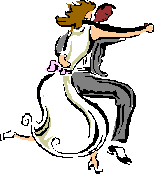 They have to pay the police when they arrive and the judge.
I don’t know what happens if they have no money.
Presumably they are still locked up.
Of 1400 prisoners only 200 are sentenced.
They have to pay to bring their case to Court.
They have to pay to leave. There
are various pieces of paper and signatures needed, all to be paid for. The heaviest sentences are to do with drugs due to the US
influence. Murder charges
can be reduced with money. They have to pay the police when they arrive and the judge.
I don’t know what happens if they have no money.
Presumably they are still locked up.
Of 1400 prisoners only 200 are sentenced.
They have to pay to bring their case to Court.
They have to pay to leave. There
are various pieces of paper and signatures needed, all to be paid for. The heaviest sentences are to do with drugs due to the US
influence. Murder charges
can be reduced with money.
It is rumoured that one can telephone anywhere in the world from the
prison for a couple of Bolivianos.
The prisoners have adjusted the phone system.
Unfortunately we had no small change so we could not verify this
information.
On the anniversary of the prison the prisoners sing songs and perform
dances and are very serious about practising beforehand.
At Xmas they will have a band in to entertain them.
In the evening we go to the cinema to see Runaway Bride with Richard Gere
and Julia Roberts. The same
film is shown more than once and people turn up to watch at any time.
They bring their children and their babies and seem to spend more
time chatting than watching. We have heard there is folk music at Casa del Corregidor with
a 20B cover charge each. The
guide book said it starts at 2200 but it obviously started at 2100.
We have one hour of music and one drink and complained but to no
avail. The pub down the
road is pumping out music but they have another cover charge of 10B.
Sun 21st November
The book says catch a bus to Oruro and get off at the 75km mark.
From there it is possible to walk to the agua termales.
We tried.
On the way to the bus station, some distance from our hotel,
we are stopped by a man who says he is the police.
He shows us an official looking identity card.
He asks where we are staying and we see no reason not to tell
him. He wants to see our
passports but they are in the hotel for safekeeping.
He is vague as to the problem but it is something to do with
tourists and drugs. He
stops another passer-by with the same query.
This man has a passport, from Argentina, and is staying at the
same hotel as us. We are
beginning to smell a rat. We
again try and find out what he wants but all he will say is that we have
to go to the police station with him.
The other man appears quite willing to go.
Jen and I are not. We
tell him we have a bus to catch and walk off.
He does nothing to stop us.
We are not sure what is going on but feel there is a scam
somewhere.
On the bus a chap jumps up into the aisle and starts talking.
We can only understand a little but the subject appears to be
medicinal. It turns out
that he is selling tea purporting to cure everything and an extremely
badly printed booklet on alternative medicines. Quite a few people buy including the chap sitting next to me.
Although I was listening to the spiel I was not paying attention
when the buying started. I
ask my fellow passenger what he has bought and he shows me his
collection of two different types of tea and the leaflet for 9B.
Afterwards Jen is annoyed she didn’t buy some as it was so
bizarre but we are too tight with our money.
At the appointed mark we get off, much to the surprise of the bus driver.
Are we sure we want to alight here in the middle of nowhere?
We must be turning South American because that’s what they do.
We walk and then we hitch. A
helluva way, we could never have walked.
A helluva road, winding up and down around the mountains,
occasionally through tunnels. A
chap driving his daughter and young son to the baths gives us a lift.
We have to stop for the boy to be sick.
Too much coca cola.
The thermal baths are completely isolated in a beautiful mountain
setting. The entrance
charge is 25B (£2.65) each. There
is a large swimming pool, a small swimming pool, and some natural pools
up the hill. The water
comes out of the hill at 72°C. The
large swimming pool is very modern surrounded by plastic garden
furniture and Bolivians reading their Sunday newspapers.
The small swimming pool is a little run down but less crowded.
The people there do not have Sunday newspapers.
The natural pools come in various heats and have better views.
We try them all several times.
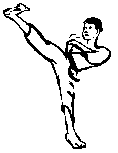
The restaurant waiter says we can catch a bus back at 1615 or 1700.
The collectivo is almost full but there is room for us if the
Bolivian girl stands. She
is short and can manage to stand by the door without problem.
Jen and I are annoyed that there are young children taking up a
seat each when it would be easy for them to share a seat.
Eventually their parents come to the same conclusion and our
patient Bolivian passenger can sit down.
The collectivo saves us waiting for papa to leave at 1700 and
maybe take us back to the main road or maybe to La Paz.
Our transport stops at Hotel Gloria where there is a big sign saying
trips to Urmiri (the thermal baths) daily.
Why didn’t we see that before?
We have dinner at the restaurant next door to our hotel and my handbag is
removed quietly by a thief.
Mon 22nd November
Today we have to start early at 0445 as the bus leaves at 0600.
I no longer have my personal organiser which was also our alarm
clock. It was in my
handbag. We ask the hotel
for an alarm call but wake before it arrives.
We are entertained (!) with “The Best of the Best” Karate
movie followed by TBOTB2, fortunately curtailed.
Oruro, 230 km south-east of La Paz,
seems shut with no cafes anywhere and we are hungry.
A beautiful train awaits us at the station. There is a charge of 2B at the baño and I have no money.
It was in my handbag. The
elderly lady guarding the door is not going to let me pass without
paying. In my best Spanish
I tell her I have no money because one of her countrymen has stolen it
all but she will not budge. I
have to borrow some money from Jen. I am not amused. The train has liveried stewards who hand out sweets to the
passengers. When they are
not serving the passengers they are cleaning the train.
The track runs through a salty looking desert with mountains in
the background.
At Uyuni, 3665m, we visit Colque Tours to confirm our trip tomorrow and
are persuaded to pay extra to hire sleeping bags because of the cold!
Uyuni’s wide streets are full of 4WDs and bicycles.
I buy a notebook and a purse/bag.
I feel almost normal. I
must put the theft to the back of my mind or I will go mad thinking of
what I should have done and what I could have done.
Tue 23rd November
Jen investigates the bus station whilst I read her fascinating book about
travels in Andalucia with a horse.
We are collected by Roberto at 1030 punto (on the dot).
We are driven to Colque to collect Michel and Marie from
somewhere in France and Philippe and Genevieve from Brussels.
We have to go back to Roberto’s place because his wife Wilda is
coming along as the cook. Their baby stays with grandma.
Roberto and Wilda do not speak English.
We set off on a dirt track. There
are several other 4WDs heading in the same direction, mostly from Colque
Tours. Usually there is
more than one track but sometimes we come up behind another 4WD and then
the dust is awful. 20 km
north of Uyuni is Colchani where they process the salt.
The salt is dug out, loaded onto lorries and driven back from the
Salar to be dumped in heaps. Ovens
are used to dry it and then it has to be iodised.
Iodine deficiency leads to thyroid problems and goitre and it is
now illegal to sell non-iodised salt.
A short distance away there is a big processing plant run by the
military. Pigs and llamas wander amongst the piles of salt.
We are still at an altitude of 3665m.
The Salar covers an area of 12,000 km² (one-third the area of
Belgium). The salt varies
between 2 and 20m in depth and it is estimated the Salar contains 64,000
million tons of salt. It
also contains large reserves of lithium and magnesium.
There is a building made of salt bricks from which one can buy salt
ashtrays and llamas. The
white salar is a huge contrast to the cerulean sky.
We stop to peer into the ojos (eyes) where the underground river
runs. The ojos are
surrounded by salt crystals. We
look round the hotel made of salt bricks.
The tariff is $20 a night. The
furniture is made of salt but not the beds.
The seats and the beds are covered with llama skins.
It feels cold inside. Outside
there are decorations of carved salt.
125km from Uyuni, we stop at the Isle of Fish, Fishermen, Cacti or Inca
something. It has many
names, is shaped like a fish and covered in huge flowering cacti, up to
8m high. One family lives
there with their llamas.
The island has a bar and a lavatory with a guardian (2B).
A lively girl with a lovely smile.
She collects foreign coins so I give her 10p for her collection.
(That was generous Kath!) Wilda
organises our sandwich lunch. Each
gringo vehicle parks in its own area.
We see one eagle and a small black headed bird with yellow body
clears up the sandwich crumbs. This
is the same sort of bird as we saw at Lago Chungara last year.
Lago Chungara in Chile is just (!) over the mountains.
Jen’s camera is
playing up. The automatic
lens cover does not always open and we keep forgetting to check so we
are not sure how many photographs will come out.
We drive on to San Juan, past a whirlwind. 100 families live there.
There is a ferocious wind that comes up in the afternoon causing
lots of dust. At
Alojamiento Sol de Mañana we have a room with seven beds.
It costs an extra 5B for a hot shower but we do not feel the
need. We walk around the
town. All the buildings and
walls are of mud brick. We
find the pub, the discotek (sic) and the shop, but they are all closed.
We find our way back to our alojamiento with some difficulty as
all the buildings and all the streets look the same.
The full moon rises. There
is masses of colour because the moon is reflected on the Salar.
It seems to rise very quickly and is quite magical.
Jen is a dentist again (everywhere we go we are asked to fill in
forms giving our name, passport number, occupation, etc. and sometimes
my imagination runs away with me) and
Roberto has a tooth problem. Whoops!
Jen excuses herself by saying she is not allowed to practise out
of the UK. We are still up
high and it does feel colder here than anywhere else we have been but I
don’t need the sleeping bag.
Wed 24th November
Llamas come running over the hill to the water first thing in the
morning. We set off in the
4WD to see the lakes. The
first one is very dark because it is deep.
Was that the Laguna del Altiplano or the Laguna Canapa?
We take a moment to sit in the sun contemplating the flamingos.
The next one is the smelly one, Laguna Hedionda, due to the sulphur?
After Laguna Honda and Laguna Ramadita we reach the Siloli Desert
where we see the Arbol de Piedra (a rock eroded into the shape of a
tree) and then drive on to the coloured lake, Laguna Colorada.
The lake is red in the middle with rings of white and green.
Why are the flamingos always at the other end?
To get closer we walk across sand and stepping stones.
It is 8oC and very windy and cold.
As Marie tries to get closer to photograph the flamingos they
move away. An elderly
gentleman is making heavy weather of the stepping stones and has to be
assisted by his young companion.
All the cheap alojamientos are full of gringos.
Our group pays 10B extra each for better (?) accommodation.
The hostel has no water just signs about conserving water.
Our room has seven beds and three bunks.
Jen and I play Rummikub in the dining room until it is too cold
to continue.
Thu 25th November
Our supposed 0430 start turns into 0515 but it doesn‘t matter.
The Sol de Mañana geyser is still very impressive and noisy.
Are these the gates of hell?
Sulphurous mist issues out of the bubbling pits and one doesn’t
like to get too close.
The Laguna de los Polques hot spring consists of two natural pools about
12” deep, full of hot water. Jen
and I are in first, watched and mocked by the rest but eventually they
succumb one after the other until it is quite cosy with more gringos (I
suppose that should be gringos) arriving all the time.
We have to leave to look at the white lake, Laguna Blanca, the
green lake, Laguna Verde, and the borax mines.
An extinct volcano, Licancabur, is reflected in Laguna Verde. When we reach the border with Chile many of the gringos leave
as they are crossing the border and heading for San Pedro.
We have to go back to Laguna Colorada.
Roberto takes us into a small village and points out the remains of some
mummies in a hole halfway up a hill.
We stop for a while in the Valley of the Rocks where erosion has
carved the rocks into unusual shapes.
Nothing specific but one can imagine anything one wants.

Eventually we arrive at Alota where we will stay the night.
I look round the town and find the shop/bar.
One buys a bottle of something and is then given a glass from
which to drink it. I meet
an Irish girl who lives in Cochabamba and her mother who is just
visiting. The elderly
gentleman is German and his boyfriend Brazilian.
They live in Santa Cruz together.
Anthony is from Stevenage where his parents run a lorry business.
He has spent two years in South America and likes Colombia best,
especially the girls. The
choice in the bar is limited but I settle for singani and durazno
(peach).
After a couple of drinks I return to our hostel with the bottles.
Philippe and Genevieve want to try singani and durazno but Michel
and Marie don’t, nor does Roberto.
The wife from the tour next door (Tonito Tours) is happy to share
a drink and chats.
We have dinner at the dining table in our room which is a bit of a squash
as we already have two beds and two bunks in a fairly small room.
A gas mantle light is attached to a 5’ high gas bottle.
Later Jen and I go back to the bar as everyone else wants to go to bed at
2000. There is very little
light from the town and the stars are incredible.
Anthony is back at the bar again.
When conversation turns to sexual fantasies, Jen and I feel it is
time to go. Are there a
couple of parties going on? We
can hear music. Probably
other gringos. Now the town
is totally dark and we walk back up the road gazing at the stars.
It is cold outside but not too bad in our room.
I use the sleeping bag and the extra blankets.
Fri 26th November
Last night over dinner we discussed Roberto’s tip.
We are not terribly impressed with our guide.
He has given us very little information and has been no more than
a driver really.
Today there is not much to do except return to Uyuni, a four hour trip.
I walk around the town before breakfast and meet Anthony.
He directs me to Toytown, the barracks.
Wary of the soldiers I take a picture of the tops of the round
buildings from the other side of the wall.
Then I walk to main gate and ask if I can take a photograph but
the answer is no. The
lake and the river are frozen. As
the sun rises so does the temperature.
We move the table and chairs outside for  breakfast.
Roberto asks what time we want to leave and we are all so
apathetic we don’t know. A
mistake. Sitting in the sun
begins to pall after a while but Roberto and Wilda have disappeared.
Jen goes off for a walk to the river.
We move our bags outside and when Roberto and Wilda return they
take the hint. With the
Toyota loaded we set off to look for Jen.
Michel and Philippe scan the river with their binoculars.
Genevieve and I walk. When
we eventually find her she is covered in mud.
She fell into the river. breakfast.
Roberto asks what time we want to leave and we are all so
apathetic we don’t know. A
mistake. Sitting in the sun
begins to pall after a while but Roberto and Wilda have disappeared.
Jen goes off for a walk to the river.
We move our bags outside and when Roberto and Wilda return they
take the hint. With the
Toyota loaded we set off to look for Jen.
Michel and Philippe scan the river with their binoculars.
Genevieve and I walk. When
we eventually find her she is covered in mud.
She fell into the river.
On the way out of Alota we have to stop at the guard post for a
discussion. The soldier
goes off to ask commandant if we can pass and comes back with piece of
paper on which to note the car number.
We feel this is rather strange behaviour as they must see many
4WDs full of gringos each week.
We drive through San Cristobal, a new mining town.
All the houses are new and their corrugated roofs shine in the
sun. They mine silver and
copper here. Amazingly,
there is a bus. We meet
several people on the road who flag us down in the middle of nowhere but
Roberto explains politely the bus is on its way.
We drive mainly on sand with grass tufts and yareta, the green
stuff that grows very slowly over rocks, contains resin and was used as
fuel until it was protected. I
spot two of the ostrich like birds, suri, so we stop and watch them.
We have lunch by another river in the sun and the bus passes us.
Outside Uyuni is the locomotive graveyard. All the old trains are gathered here to rot very slowly.
There are some Bolivians visiting the graveyard too.
Their ambition seems to be to climb onto the first train and then
get to the other end without touching the ground.
They succeed and then start on the second row of trains.
At the graveyard Wilda asks me if I liked the trip.
I say salar yes, Sol de Manana yes, thermal baths double yes, all
the driving no. We have
crossed huge plains between the mountains, driven up steep hills and
down sandy banks. It is
probably a 4WD driver’s dream but the journeys went on for too long
for my liking. The rest of
the group agree.
Sat 27th November
We catch the 1000 bus to Potosi. We
travel across the altiplano – wide areas of flat plains between the
mountains covered only with tufty grass and llamas. There are people getting on and off in the middle of nowhere,
what a surprise. The
windows on bus don’t open, another surprise.
It is very hot. We
pass old terraced land, abandoned houses and lots of donkeys.
At 1530 we arrive at Potosi having driven through one mining town
and a couple of other villages. That
was all - in five and a half hours.
Potosi is one of the highest cities in the world at 3977m. Our chosen residencial, Casa Maria Victoria, is full and has
only double bedrooms left. We
are given this information by a woman sitting on the floor in the
office. She does not get
up. A couple of streets
away we find La Turista Hotel. It
is rather seedy and charges 90B with baño.
We ask at a few others in the town but they are just as expensive
and just as bad.
Sun 28th November
At Silver Tours we meet two Israeli girls, a Dutch couple and two Belgian
chaps waiting for a trip around the silver mine.
Our collectivo collects three more Israelis from Casa Maria
Victoria and we are off to the mine just outside town.
The area looks remarkably like Tuckingmill with the same style
buildings of rusty corrugated iron and piles of mine waste.
The river is grey and thick.
One of the Israeli girls is chewing
the plastic top to a water bottle (?).
Our collectivo is old and cannot make it up the hill.
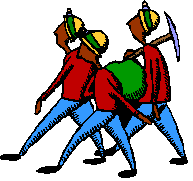
We are separated into groups. Our
group consists of the Belgians, Rudolpho the guide and Chin Chin the
assistant. They give us
hard hats, macs and wellies. We
buy coca leaves, cigarettes and dynamite for the miners.
Rudolpho suggests we try some of the coca leaves.
They taste awful, just like chewing leaves (!) and have no effect
whatsoever in the brief time I keep them in my mouth.
The explanation is in Spanish apart from “Watch Your Head”.
This is Potosi’s famous silver mountain, the Cerro Rico, 4824m,
from where the Spanish gained so much wealth.
The tunnels go into the hillside horizontally. It is a normal temperature in the mine and there is lots of
air (taking account of the altitude).
The guide books are full of stories of 40oC and lack
of oxygen in the tunnels so we are surprised.
There are three types of miners, associates who can mine where
they want, assistants who help and a third lot.
There’s only so much Spanish I can take in.
The miners decide when to work.
They recover mainly zinc. The
rock is very hard so they dig holes for dynamite and take the spoil to
the surface in wheelbarrows or bags.
They can move 8-10 tonnes in 3 days.
We are also given acetylene lights to which you add water for
some reason. Any miners we
pass get the presents. The
mine has 6 levels but is not very deep. Ropes are used to help get between levels.
The miners are very superstitious. We
meet El Tio, the god of the underworld and have to give him more
presents. He is a small
grinning devil, with a cigarette in his mouth and coca leaves and
bottles of alcohol strewn around him.
The miners believe that the devil owns the minerals in the earth
and, in order to appease him, every mine has its own statue or statues
of El Tio where the miners make offerings.
Miners drink 96o pure alcohol and don’t mix it to
improve their chances of pure minerals.
During their carnival in February they have parties down the mine
with alcohol and coca but no beer or women.
They have more parties in August, celebrating the festival of
Chutillos, Fiesta de San Bartolomé, a long winded story involving an
evil spirit falling in love with the sun and the Jesuits vanquishing the
spirit with an image of San Bartolomé.
We watch one miner tamping in his dynamite and then we move on.
He joins us and there is a bang.
Nothing seems to move and there is no dust.
He says he can still find some copper and silver.
He has been working underground for 30 years and started at 15.
Silicosis gets them in the end.
They receive a pension of 800B (£75.00) per month but they have
to pay 20% to the mine co-operative.
We are informed that the lamps are poisonous too.
The tunnels are 3’ high in places but others are 6’ high.
We were expecting to have to crawl around inside but mainly we
could walk normally and only had to duck for short periods.
All my claustrophobic fears were not realised and I felt that
visiting the King Edward mine at Troon in Cornwall was far more
traumatic.
In the afternoon Silver Tours take us to the Inca bath, a local thermal
bath. It is barely warm and
very deep. The edges are
covered in weed and it is very unappealing.
We are not impressed.
 Looking for a restaurant in the evening we find one serving viscacha (the
rabbit like member of the chinchilla family) so we have to go there.
Funnily enough it tastes very rabbity but is a bit tough.
Paul arrives so he joins us.
He is full of dreadful stories of deaths on the road to Coroico. Looking for a restaurant in the evening we find one serving viscacha (the
rabbit like member of the chinchilla family) so we have to go there.
Funnily enough it tastes very rabbity but is a bit tough.
Paul arrives so he joins us.
He is full of dreadful stories of deaths on the road to Coroico.
Jen and I intend to go to the cinema to see Anthony Hopkins in Instinto
but although there are noises from the other side, the doors of the
cinema are locked. The
other cinema is showing Central Station in Portuguese with Spanish
subtitles but we decide that would be too difficult.
Mon 29th November
The bus to Tarija leaves at 1630 and arrives at 0600.
35B (£3.70) each. We get to the bus station in plenty of time for 1630 but no
bus. The bus station is
alive with three competing ice-cream sellers with horns to advertise
their wares; two little boys selling the newspaper Gente (People), with
tits on the front and tits on the back; a blind man; a spotted dog; a
young boy with a Newfoundland puppy; watch sellers with waterproof
watches in plastic bags of water as well as all the waiting passengers.
One of the watch sellers tries his patter on a passenger and an
argument ensues. We have no
idea what it is about. Other
passengers join in and then the whole thing subsides.
There are women selling postre (pudding) - plastic glasses of
jelly? fruit? topped with cream and a cream cracker.
Many of the women are traditionally dressed in circular pleated skirts,
with a pinny over the top, underskirt, shawl and hat. Sometimes they
wear a cardi too. The tops
are embroidered cotton or velveteen.
The hats can be bowler, straw or trilby.
There are men wearing woolly hats with ear pieces and then a
trilby on the top.
Jen is convinced it is going to be 1900 before the bus arrives so only
another hour and three quarters to wait.
The sun is hot. More
people arrive to sell wobbly jelly and nuts.
A bus pulls in, it’s from the O’Globo bus company. What a wonderful name. Along
the walls there are two or three little shops overflowing with drinks,
sweets, biscuits, toilet rolls, cigarettes, batteries,  sanitary towels
and bread rolls in bags. sanitary towels
and bread rolls in bags.
For a long time there are no buses of the right company, then there are
two buses. I am very
suspicious of people standing behind me.
I have already lost my handbag and do not intend to lose my
rucksack. The bus company
offices are actually on the floor above and rather than carry the
luggage down the stairs the bags are lowered to the ground one by one.
Jen watches to see which bus our rucksacks are lowered next to and
stored in. Our bus has the
usual amount of windows that open (none).
At 2000, after an hour, we stop outside two restaurants opposite one
another in the middle of nowhere. It
is now dark. Everyone
rushes off to have dinner. Jen
and I have stocked up on food so all we have to do is wait.
During the night we drive along an unmade road with many buses
and lorries coming the other way. We
have to stop twice with two punctures.
The driver organises and the mate does all the work.
Tue 30th November
When the sun comes up we are on a small winding road through green hills.
Cows roam free and have to be avoided on the road.
The green is interspersed with white single storey houses with
red tiled roofs. There are
lots of trees. We arrive at
Tarija at 0800. Tarija is
supposed to rival Cochabamba for the title of most pleasant spot in
Bolivia. We ask the taxi
driver for a reasonable hostal and he takes us to Zebollas.
We walk into a lovely courtyard filled with potted plants and
flowers and covered by a vine with grapes.
25B (£2.65) each for four bedded room without baño.
Tourist Information gives us a map but not much else.
Jen finds a hairdressers offering leg waxing for 15B (£1.60) per leg but
they have obviously never done it before.
They borrow the wax from another hairdressers and then proceed to
remove the skin from Jen’s legs.
I don’t think mine need doing at the moment thank you.
We have a very good lunch in a café on the plaza - excellent
salad, spaghetti and home made lemonade.
Everything is closed by the time we’ve finished, it is siesta
time. We try changing our
travellers’ cheques at the bank and at the cambio but they are not
interested. They suggest
the ferreteria (the ironmongers)! At
the wine shop we are offered a tour for $20 (£12.50) which seems steep
but includes a tasting. By
2200 the town is very quiet apart from the remains of the market on the
corner down from us and the Karaoke Disco opposite.
Wed 1st December
Zeballos has three generations running it and says “and sons”
outside. Behind the single
storey building is a two storied extension and then at the back there is
a large modern block of four floors where we are in the basement. They
have wonderful hot showers but the shower shares a room with the wash
basin and lavatory so everything gets wet.
We visit the Tourist Information again but are still given no local
information apart from the tale of the fiesta in March when all the
women dance in the streets in embroidered tops, wide pleated skirts and
ornate hats. As it is only
December this is not helpful.
We catch a bus to Tomatitas. We
find a park with paths, trees, barbecue areas and two empty swimming
pools. There are people
doing their washing in the river. At
one point the river gets deeper and we can swim if we don’t mind the
little boys splashing. The
strong current sweeps you onto the rocks but it’s only 5’ deep.
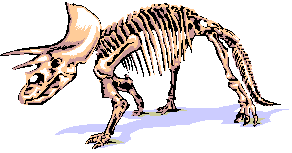 Then the big boys come to play. One
of them has a birthday and they are drinking chuflay (singani and ginger
ale) out of plastic bottles. I
know because I tried it. It
is all getting a bit boisterous so we retreat and walk into town.
Outside a little café I have a white wine, Jen has a cascada (a
revolting, extremely sweet, soft drink that she cannot finish) and we
are accosted by drunks. We
catch a bus back into town and another to the Terminal to buy our
tickets to Bermejo 30B each at 0830 Friday. Then the big boys come to play. One
of them has a birthday and they are drinking chuflay (singani and ginger
ale) out of plastic bottles. I
know because I tried it. It
is all getting a bit boisterous so we retreat and walk into town.
Outside a little café I have a white wine, Jen has a cascada (a
revolting, extremely sweet, soft drink that she cannot finish) and we
are accosted by drunks. We
catch a bus back into town and another to the Terminal to buy our
tickets to Bermejo 30B each at 0830 Friday.
Thu 2nd December
A sleepless night due to the mosquitoes, someone else’s orgasm and the
sound of a hoover? Elections
in the town mean firecrackers and people driving round the streets with
flags and loud hailers. We
pay the outrageous $20 for a trip to the bodega.
A taxi driver is asked to take us to the fossil area.
Tarija is well known for its fossils.
Communication is difficult but we end up at the Mirador where
there is a park and children’s area including a dinosaur slide.
Jen goes looking and I wait in the shade.
I have a go on the tallest slide which is hot metal and almost
burns my bum.
Back in town we visit the Museum (el Museo de Arqueología y Paleontología)
which is wonderful. It is
only small but is stuffed with very impressive prehistoric animal bones
(dinosaur and Andean elephant) and huge armadillo shells.
It is part of Tarija’s university.
I feel I have been out in the sun too long and need a rest.
Did I forget to mention it is very hot?
Our taxi takes us to Concepcion with a girl and a chap from the
Tourist Agency. I think she
was supposed to be there because he couldn’t speak English or maybe
the other way round but neither of them could speak English.
We are shown round the bodega.
They produce 350,000 bottles a year.
1500 – 1800 can be bottled in an hour.
They have 40 employees. Moreno
Wines (a name I remember from my days at the wine merchants) are their
importers in the UK. I taste their Merlot Reserva (which is excellent), their best
singani (which tastes like singani) and their experimental cognac (which
is very strong and rough as rats).
On the way back the taxi driver takes us to see the 400 year old rock
paintings. All we have to
do is climb this hill and then the next one and then the next. They are very worn and we are in danger of being blown over
the edge by the wind. I buy
a fly spray to aid a peaceful night, if I can stand the smell.
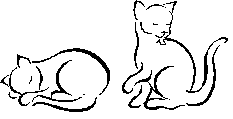
Fri 3rd December
The bus to the border leaves at 0800.
Jen and I leap out of our beds at 0610.
The bus arrives soon after the appointed hour. The driver is very pretty and very sulky.
He has a mate and a young lad to help.
We have seats 1 and 2 right at the front and there is no
partition so we can see everything they do.
There are only a handful of passengers on the bus.
After an hour or so we stop at a village. The driver goes to sleep.
We wander around for a bit and then get back on the bus.
The driver continues to sleep.
Eventually I ask the mate what time the bus leaves “1130”
Yikes. We disappear
down the road and into the square for a coffee. The owner of the café
produces two white kittens for us to play with.
A little while later we can hear a horn blowing but it isn’t
1130 so we take no notice. At
1115 we wander back to be greeted at the corner by one of the other
passengers “the bus is leaving” well, wanted to leave, but we 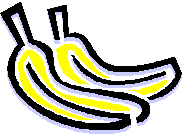 are
missing. The driver revs up
and begins to move as we
approach. We drive out of
the village and down the hill. They
are making a new road and there is a chain across with a queue. We stop and the driver goes back to sleep.
Huh! are
missing. The driver revs up
and begins to move as we
approach. We drive out of
the village and down the hill. They
are making a new road and there is a chain across with a queue. We stop and the driver goes back to sleep.
Huh!
Another half an hour passes and we are let through.
There seems no reason to hold us up.
The road is good. There is traffic going both ways and there are passing places
if the road is not two lanes. Another
Bolivian mystery.
Our bus gang have started with empanadas (pasties) and gaseosas.
Then the driver has a cigarette underneath the no smoking sign
and the others have a puff. Now the two older ones are into coca leaves.
The young lad has gone to the back of the bus to sleep.
They keep stuffing coca leaves into their mouths as though they
are eating sweets and end up with the hamster look.
The mate produces a packet of bicarbonate of soda which is
apparently needed to get the right reaction from the coca leaves.
The views are brilliant. We
drive along the river. We
are back in the jungle and can feel the heat.
Either side of us we can see sugar, bananas, mangoes and oranges.
We go up the windy road through the mountains blowing the horn on
every corner. The chap next
to me attempts to talk to me. He is in sugar and has a very thick accent.
We get to a point where the road divides and should have got off
there but we didn’t know and no-one told us.
We drive on to Bermejo and then out the other side of the town to
the bus station. We all
disembark and the rest of the passengers disappear.
The bus moves off still with our rucksacks.
We have to walk to the new resting place and wait until Mr
Beautiful decides to give us our rucksacks.
Sulky or not?
We get a taxi into Bermejo to change our
bolivianos and then on to the border.
We have no problems at Immigration and walk over the bridge which
is painted half in Bolivian colours and half in Argentine.
The Police on the other side take a superficial look at our
Next
Chapter Top of
page Home
|